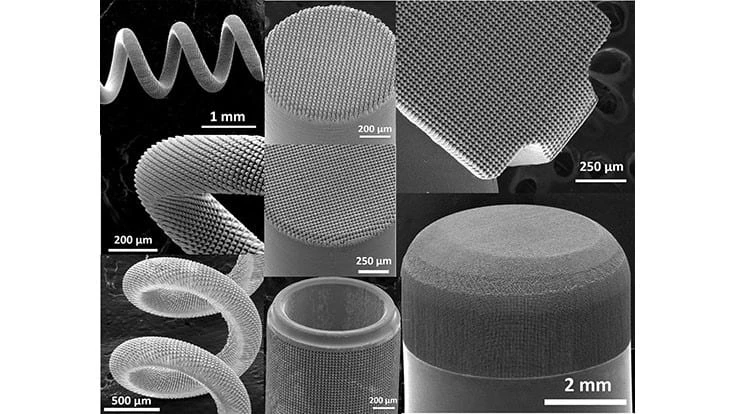
Pulse Technologies Inc.
Pulse Technologies’ newly patented Hierarchical Surface Restructuring (HSR™) technology enables medical device manufacturers to achieve greater performance, efficiency, and longevity in their neural interfacing devices.
Long-term implantable and diagnostic medical devices such as pacemakers and various types of neurostimulators function via sensing, recording, and stimulating between their electrodes and surrounding tissue in the biological environment to deliver effective treatment for patients. Generally speaking, higher electrode surface area improves electrochemical performance of the electrode.
HSR is a novel surface restructuring technique that bombards the electrode’s surface with ultra-fast, ultra-short and high-energy laser pulses. This increases the electrode’s available electrochemical surface area, thereby enhancing both charge storage capacity and specific capacitance of the electrode’s surface while reducing impedance. Additional benefits include:
- Surface tunability
- Ultra-high surface area
- Hierarchical surface structure
- Applicable on complex geometries
- Suitable for use in a diverse range of sensing, recording, and stimulating applications
- Scalable and commercially viable
- Applicable on finished medical device assemblies
- Compatible with individual electrodes, subcomponents, and fully assembled leads
Electrodes and microelectrode arrays treated and optimized by HSR’s proprietary process can assist device manufacturers in producing higher-performing and more efficient implantable and diagnostic medical devices with enhanced performance and longevity.
Latest from Today's Medical Developments
- Birk Manufacturing achieves ISO 13485 recertification
- AdvaMed’s Medical Innovation Agenda for the 119th Congress
- SW North America's BA 322i twin-spindle CNC
- The role of robotics in precision medical device manufacturing
- Swiss Steel Group’s UGIMA-X machinable stainless-steel sets
- #51 - Manufacturing Matters - The Impact of M&A in MedTech 2024
- Visual Components: 25 years of simulation and programming software innovation
- Zimmer Biomet announces definitive agreement to Acquire Paragon 28





